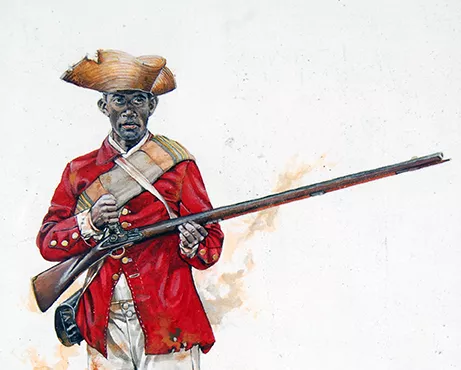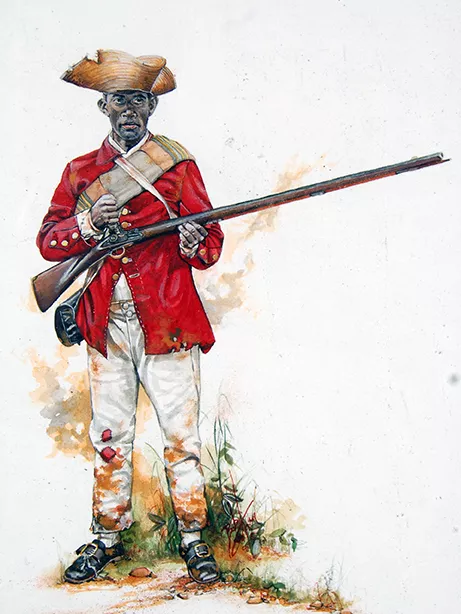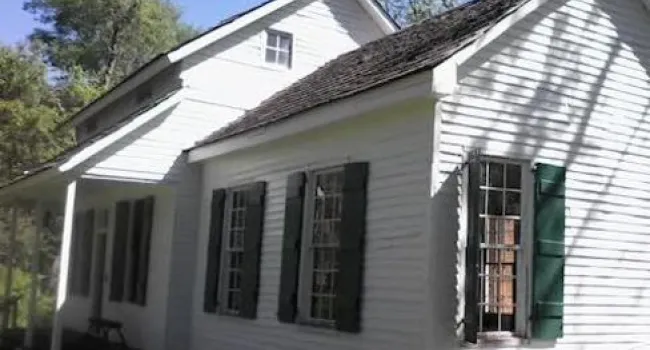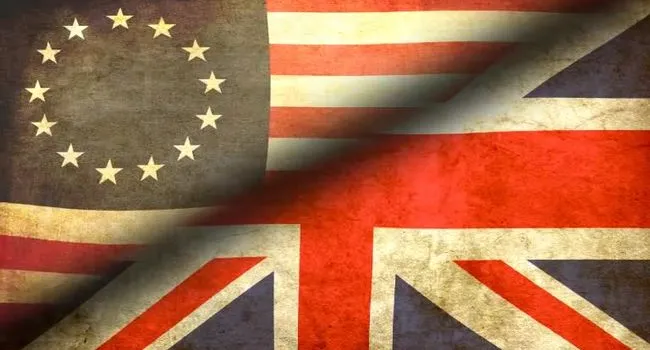African Americans, both free and enslaved, served in the American and British armies as armed troops and as laborers known as "pioneers."
In many places, slaves were offered freedom if they agreed to fight for the British. Large numbers of slaves deserted their plantations, particularly in the lowcountry. But as far as the backcountry, in the case of the Bratton's slave Watt, some felt like their loyalty was to the family that owned them.
Illustrations.
- Black Loyalist
- Black Pioneer (Painting by Bob Graham, Charleston, SC)
Standards
- 4.2.CE Examine the economic and political motivations for colonists to declare independence from Great Britain.
- 4.2.CX Contextualize South Carolina’s role in the development of the new nation.
- 8.2.CO Compare the motives and demographics of loyalists and patriots within South Carolina and the colonies.
- This indicator was developed to encourage inquiry into the economic, political, and social motivations of the patriots and the loyalists in the era of the American Revolution.
- 8.2.CE Explain the economic, political, and social factors surrounding the American Revolution.
- This indicator was developed to encourage inquiry into how the colonies began to unify to create a distinctive American identity over the course of events of the American Revolution.
- 8.2.CX Contextualize the roles of various groups of South Carolinians as the colonies moved toward becoming an independent nation.
- This indicator was developed to encourage inquiry into the motivations of colonists during the American Revolution and the progression of conflict and failed compromise that ultimately led to revolution.
Resources
You need to be logged in to listen to view this content. Create an account now; it's quick, easy, and free!
Log In to View















